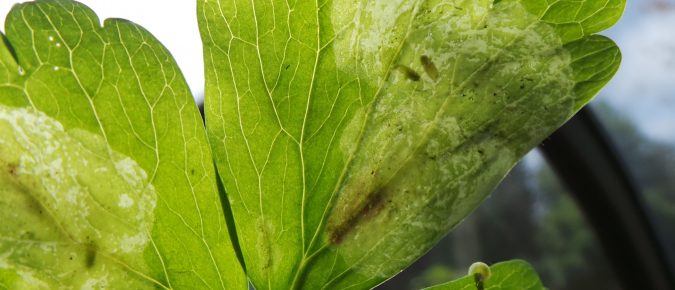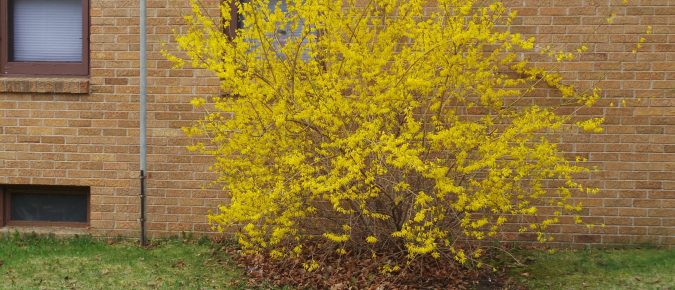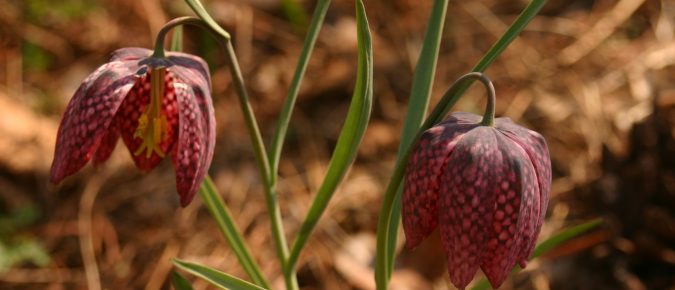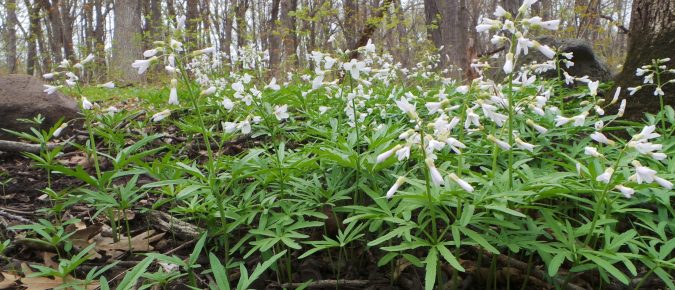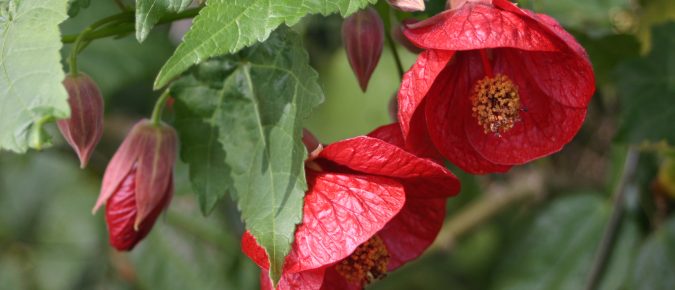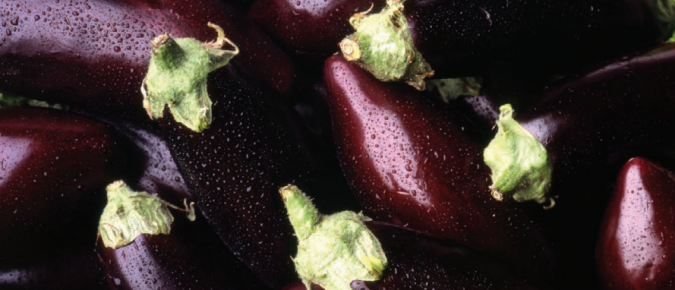If you have columbines in your garden, you likely have seen squiggly white trails or blotches on the leaves or had the entire leaf devoured at one time. These are significant as cosmetic problems, but generally have little impact on the plant’s health. Learn more about the life cycle of the two insects that cause these problems and how to deal with them in this article…
As one of the first shrubs to flower, the showy yellow flowers of forsythia are the ultimate symbol of spring in many places. Learn more about forsythia in this article…
Looking for an unusual spring flowering bulb? Guinea hen flower sports a variable, checkered pattern on the nodding, bell-shaped flowers that are only about 2 inches long. The dark colored flowers (shades of red, pink or purple) are best sited where they can be appreciated up close. Learn more about Fritillaria meleagris by reading this article…
Cutleaf toothwort is one several woodland plants that are harbingers of spring with their early flowers. Although small, this charming spring ephemeral is eye-catching with its distinctive leaves and soft white flowers. Easy to grow, it’s a great addition to any woodland garden, or to just appreciate the colonies that fill many natural areas. Learn more about this native species by reading this article…
Skunk cabbage is one of the first plants to bloom in the spring, often when there is still snow on the ground. The bizarre flowers are followed by huge rosettes of broad leaves that disappear by summer. Read this article to learn more about this interesting native plant.
If you want a glamorous and spectacular plant to bring an exotic look to your garden, and sweetly fragrant flowers, try growing kahili ginger. This showy subtropical plant is an attractive foliage plant even when it doesn’t have its terminal spikes of striking yellow and red fragrant flowers. To learn more about Hedychium gardnerianum, read this article…
With bold-textured, silvery blue foliage, honeybush (Melianthus major) makes a spectacular specimen plant in containers or in the border. This South African native is evergreen only in zones 9 and 10, but its rapid growth means it can be used as a seasonal ornamental to provide a lush, exotic look in cooler climates. Learn more about honeybush in this article…
Flowering maples aren’t real maples, but they have palmate leaves that look similar to that tree’s leaves, and much more spectacular flowers than true maples have. Also commonly referred to by just the genus name Abutilon, these tender sub-shrubs can be used as seasonal accent plants or grown indoors to bloom year-round. For more about flowering maples read this article…
Balloon plant is one of many common names for an African milkweed that develops showy, hairy, inflated seed pods that are a real conversation piece. Grown as an annual in our climate, this tender perennial can be a showpiece in the garden or interesting addition to floral arrangements. To learn more about Gomphocarpus physocarpus, read this article…
Looking for a low-maintenance, fall-blooming perennial? The Perennial Plant Association’s Perennial of the Year 2016 could be just the ticket. With pure white flowers held on wiry stems well above dark green mounds of foliage, Anemone ‘Honorine Jobert’ makes a statement in the fall garden. To learn more about this great ornamental, read this article…
Emerging Agricultural Markets Team Revised: 8/6/2012 Item number: A3900-02 Whether you’re a new or experienced vegetable buyer, you’re likely to find helpful information and cooking inspiration in this pamphlet. It offers tasty recipes and helpful tips for buying, storing, and cooking cabbage, eggplant, and tomatoes (4 pages).
Emerging Agricultural Markets Team Revised: 8/6/2012 Item number: A3900-03 If you’re looking for a new way to prepare carrots or aren’t sure how to store that zucchini you brought home from the market, look no further. This pamphlet offers tasty recipes and helpful tips for buying, storing, and cooking beans, carrots, and summer squash (2 […]

